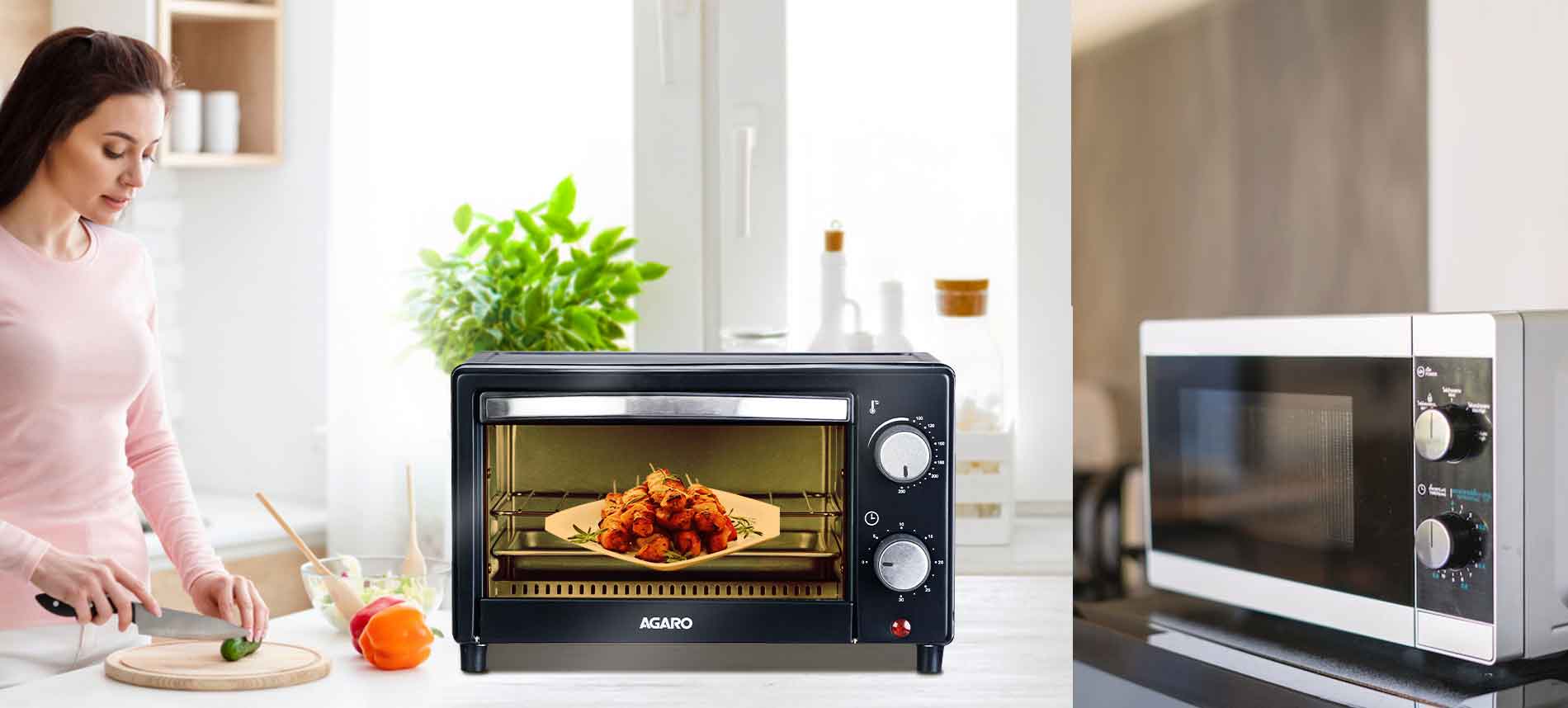In today’s fast-paced world, kitchen appliances play a vital role in our daily lives, making cooking and heating food more convenient and efficient. Two common kitchen appliances that often come to mind when thinking about cooking and reheating are microwaves and ovens. While both serve the purpose of heating food, they are distinct in their functionality, applications, and features. In this article, we will delve deeper into the key differences between a microwave and an oven, helping you make an informed decision for your kitchen needs.
Understanding the Microwave
Introduction to Microwaves
Microwaves are compact kitchen appliances that use microwave radiation to heat and cook food. They have become a staple in most households due to their speed and convenience in food preparation.
Microwave Technology
Microwaves work by emitting electromagnetic waves, commonly known as microwaves, which excite water molecules within the food. This excitation generates heat and cooks the food quickly and evenly, making it a reliable choice for those who appreciate efficiency in their culinary endeavors.
Speed and Efficiency
Microwaves are renowned for their unparalleled speed in heating food. They can effortlessly reheat leftovers or cook a meal within mere minutes, making them ideal for busy individuals juggling work, family, and cooking.
Types of Microwaves
There is a wide variety of microwaves available in the market today, including countertop, built-in, and over-the-range models, each offering its unique features and installation requirements. This variety ensures that there is a microwave to fit every kitchen layout and style.
Limitations
However, it’s essential to recognize the limitations of microwaves. They are primarily designed for reheating and cooking smaller portions of food. Their compact size may not be suitable for baking or roasting large dishes, and this is a crucial consideration for those who enjoy hosting dinner parties or preparing extensive family meals.
Exploring the Oven
Introduction to Ovens
Ovens, on the other hand, are larger and more versatile kitchen appliances designed for baking, roasting, and broiling. They offer a wider range of cooking possibilities, making them an indispensable part of any serious home kitchen.
Conventional Oven
Conventional ovens use heating elements, either electric or gas, to generate heat. This method provides a consistent temperature for baking and roasting, ensuring that your dishes are cooked to perfection.
Convection Oven
For those who demand precision in their cooking, convection ovens are the answer. These ovens have a fan that circulates hot air, ensuring even cooking and browning. They are particularly great for baking delicate pastries, roasting tender meats, and achieving that coveted golden-brown finish on casseroles.
Cooking Versatility
Ovens offer unparalleled versatility when it comes to cooking methods. You can effortlessly bake bread, roast a succulent turkey, or broil steaks to your desired level of doneness in an oven, making it an essential tool for culinary experimentation.
Cooking Time
It’s worth noting that oven-cooked dishes usually take longer to prepare than those made in a microwave. This is because ovens require time to preheat and cook food thoroughly. Patience is a virtue when it comes to achieving the best results with an oven.
Key Differences
Heating Mechanism
The primary difference between a microwave and an oven lies in their heating mechanisms. Microwaves use radiation to excite water molecules, resulting in rapid and efficient heating. In contrast, ovens rely on conduction and convection for heat transfer, which provides a slower but more thorough cooking process.
Cooking Applications
Microwaves excel in reheating and quick cooking tasks. They are perfect for warming up leftovers, defrosting frozen items, and making popcorn in a flash. Ovens, on the other hand, are better suited for baking delectable cakes and cookies, roasting tender meats, and broiling dishes to perfection.
Size and Capacity
In terms of size and capacity, microwaves are typically smaller and have limited cooking space. Ovens, however, come in various sizes to accommodate large dishes, multiple racks, and even specialty bakeware. Whether you’re cooking for one or hosting a grand dinner party, you can find an oven to meet your needs.
Cooking Results
When it comes to achieving culinary excellence, ovens are the preferred choice. They provide better results in terms of texture and flavor, making them a favorite among baking enthusiasts and professional chefs. The even heat distribution and precise temperature control in ovens contribute to outstanding cooking outcomes.
Energy Efficiency
While both appliances have their merits, microwaves are more energy-efficient for reheating small portions. Ovens, due to their larger size and longer cooking times, tend to consume more energy when preparing substantial meals. It’s essential to consider your energy usage when deciding between the two.
Conclusion
In conclusion, the choice between a microwave and an oven hinges on your cooking needs, preferences, and the space available in your kitchen. If you require a quick and efficient appliance for reheating and simple cooking tasks, a microwave is an excellent addition to your culinary arsenal. However, if you relish the art of baking, roasting, and preparing elaborate dishes, an oven is a must-have kitchen companion. Understanding the differences between these two appliances empowers you to make an informed decision that aligns with your culinary lifestyle and enhances your cooking experience.
FAQs
Can I bake a cake in a microwave?
Microwaves are not suitable for baking cakes, as they lack the even heating required for achieving a perfect rise and texture in cakes.
Do ovens consume significantly more electricity than microwaves?
Ovens do consume more electricity when cooking larger meals or for longer durations, but microwaves are more energy-efficient for quick tasks.
What is the average lifespan of a microwave and an oven?
The average lifespan of a microwave is around 7-10 years, while ovens can last for 10-15 years with proper maintenance and care.
Can I use an oven to reheat pizza?
Yes, you can use an oven to reheat pizza, and it often results in a crispier and more delicious outcome compared to a microwave.
Which appliance is better for cooking a turkey, a microwave, or an oven?
An oven is the preferred appliance for cooking a turkey, as it provides the even heat distribution necessary for roasting large cuts of meat and achieving that beautiful golden-brown skin.



